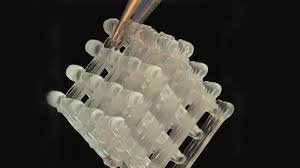
Breaking News
 "Kill Babies, Superman"? New CHILDREN'S Book Calls Abortion a "Superpower"
"Kill Babies, Superman"? New CHILDREN'S Book Calls Abortion a "Superpower"
 Gold Warning Issued as New Monetary System Takes Hold
Gold Warning Issued as New Monetary System Takes Hold
 This Is The Best Tool Set I've Ever Tested!
This Is The Best Tool Set I've Ever Tested!
 RFK JR, HHS, ALIGN WITH PARENTAL CONSENT
RFK JR, HHS, ALIGN WITH PARENTAL CONSENT
Top Tech News
 This tiny dev board is packed with features for ambitious makers
This tiny dev board is packed with features for ambitious makers
 Scientists Discover Gel to Regrow Tooth Enamel
Scientists Discover Gel to Regrow Tooth Enamel
 Vitamin C and Dandelion Root Killing Cancer Cells -- as Former CDC Director Calls for COVID-19...
Vitamin C and Dandelion Root Killing Cancer Cells -- as Former CDC Director Calls for COVID-19...
 Galactic Brain: US firm plans space-based data centers, power grid to challenge China
Galactic Brain: US firm plans space-based data centers, power grid to challenge China
 A microbial cleanup for glyphosate just earned a patent. Here's why that matters
A microbial cleanup for glyphosate just earned a patent. Here's why that matters
 Japan Breaks Internet Speed Record with 5 Million Times Faster Data Transfer
Japan Breaks Internet Speed Record with 5 Million Times Faster Data Transfer
 Advanced Propulsion Resources Part 1 of 2
Advanced Propulsion Resources Part 1 of 2
 PulsarFusion a forward-thinking UK aerospace company, is pushing the boundaries of space travel...
PulsarFusion a forward-thinking UK aerospace company, is pushing the boundaries of space travel...
 Dinky little laser box throws big-screen entertainment from inches away
Dinky little laser box throws big-screen entertainment from inches away
 'World's first' sodium-ion flashlight shines bright even at -40 ºF
'World's first' sodium-ion flashlight shines bright even at -40 ºF
3D-printed 'hydrogels' could be future space radiation shields for astronaut trips to Mars

Spend a single day outside our planet's protective atmosphere and magnetic field, and you could be exposed to radiation levels equivalent to what you'd experience across a whole year back on Earth.
It's a risk astronauts face, and especially so during long trips. As such, finding methods to combat radiation exposure in space has long been on the minds of researchers working on technology for space travel.
New research suggests a novel solution: a material called "hydrogel" — the same technology used for the 'grow monster' toys — could shield space travelers from harmful radiation.
A research team from the Polymer Chemistry and Biomaterials Group at Ghent University in Belgium have been testing this type of superabsorbent polymer as an alternative radiation shield.
"The superabsorbent polymer that we are using can be processed using multiple different techniques, which is a rare and advantageous quality amongst polymers," Manon Minsart, a postdoctoral assistant at Ghent Universaid, said in a statement. "Our method of choice is 3D printing, which allows us to create a hydrogel in almost any shape we want."
Hydrogels of course are already used in a range of consumer products. "The beauty of this project is that we are working with a well-known technology," Ghent researcher Lenny Van Daele said, in the same statement. "Hydrogels are found in many things we use every day, from contact lenses to diapers and sanitary products."
Daele says the research group drew on their previous experience with medical hydrogel applications, like using them for "soft implantable material to repair damaged tissues and organs."
While water can create a good shield for radiation, according to the researchers, SAPs could be even safer and more effective. Rather than using free-flowing water as radiation protection, hydrogel soaks up the water, creating equal distribution and protection — and if the protective layer is punctured, the water won't leak out, which is important when working around sensitive electronics.
In addition to protecting astronauts, the European Space Agency (ESA) foresees further uses for hydrogel in space. "The material could also potentially be applied to uncrewed missions — in radiation shields for spacecraft, or as water reservoirs once we have optimised the method of retrieving water from the hydrogel," added Malgorzata Holynska of ESA's Materials, Environments and Contamination Control Section, in the statement.



